Rosatom seems to be confused in its plans to provide Chukotka with new energy capacities. In particular, it is unclear how to provide Baimsky Mine and Processing Plant (Baimsky GOK) with light and heat.
Deputy Prime Minister, Plenipotentiary in the Far Eastern Federal District Yuri Trutnev hastened to help the nuclear corporation: he announced that now Chukotka needs... new nuclear power plant. But what about the Akademik Lomonosov, a nuclear barge with two nuclear reactors on board, shifting from "one foot to the other"? Such a nuclear machine is able to warm the city, which is home to 250 thousand inhabitants. Let us recall that the whole of Chukotka is 50 thousand "souls". Does it mean that Academik Lomonosov is in total failure? The nuclear "trough" (as the nuclear scientists themselves affectionately call it) was being built during 13 years, more than 121 billion rubles were invested in the construction. Akademik Lomonosov has been inactive in Pevek since December 2019.
And no longer in whispers, but aloud they say that the floating NPP is not able to replace either the old Bilibino NPP together with the Chaunskaya CHPP, or to heat the Baimsky copper-gold deposit.
Who will be responsible for the "diamond" unprofitable project? And why is the Rosatom state corporation offerring new projects almost every week now?
The Moscow Post correspondent studied this thermonuclear situation.
11 power supply options
The necessity of a new nuclear power plant for Chukotka was announced by Deputy Prime Minister Yuri Trutnev at the Far Eastern Federal District-2020 forum. And this is how he said it:
"The construction of a nuclear power plant may be necessary for the power supply of one of the world's largest copper-gold deposits - the Baimsky Mining and Processing Plant (MPP). Together with the Ministry of Energy and the Ministry for the Development of the Russian Far East and Arctic, we are putting together all the conditions for the Baimskaya Ore Zone development project to be implemented. You can treat this project as you like, but it seems that a nuclear power plant will have to be built there in order for it to take place…"
Further, the Deputy Prime Minister, who is also the Plenipotentiary of Far Eastern Federal District announced that the issue of electrification was raised at the Federal level many times, and 11 energy supply options for Baimsky MPP had been reviewed.
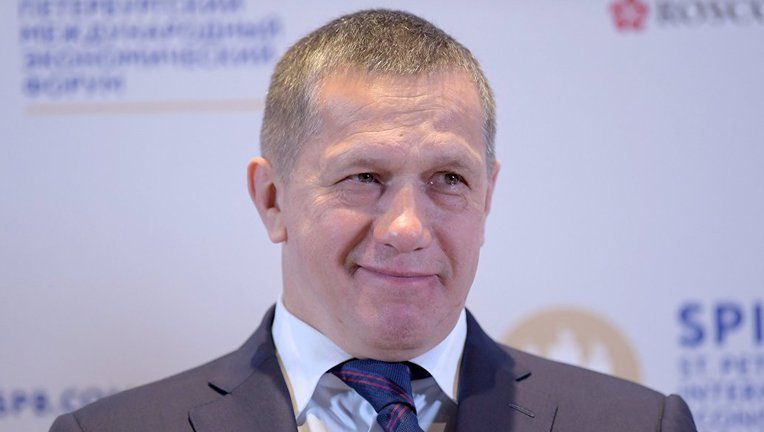
Deputy Prime Minister Yuri Trutnev
Today - attention! - two priority options for providing electricity to the Baimsky copper and gold deposit have been selected. The first involves the construction of a thermal power plant in the port at Cape Nagleynyn - Peschatka and the Nagleynyn substation. The second project involves the use of 4 modernized floating units with nuclear reactors RITM-200, as The Moscow Post told in a recent journalistic investigation Kiriyenko found furniture for Chukotka.
And now, it turns out, there is also a third option - a new nuclear power plant.
We will remind that the agreement about implementation of investment project called Development of Baimskaya Ore Zone Deposit was signed by the Ministry of the Russian Federation, the Government of the Chukotka Autonomous district, the KAZ Minerals company (Kazakhstan) (KAZ Minerals PLC) and Baimskaya Mining Company (Baimskaya GDK) in 2018.
The construction of the Baimsky MPP will attract 360 billion rubles of investment to the region. And create more than 3.5 thousand working places.
For God's sake, what about the Akademik Lomonosov floating nuclear power plant? Does it mean that they do not need it anymore, since Deputy Prime Minister Trutnev is now voicing new priority projects?
Very expensive toy
Recall that the extremely high cost of the Akademik Lomonosov project was discussed at the very beginning of the construction of the nuclear barge.
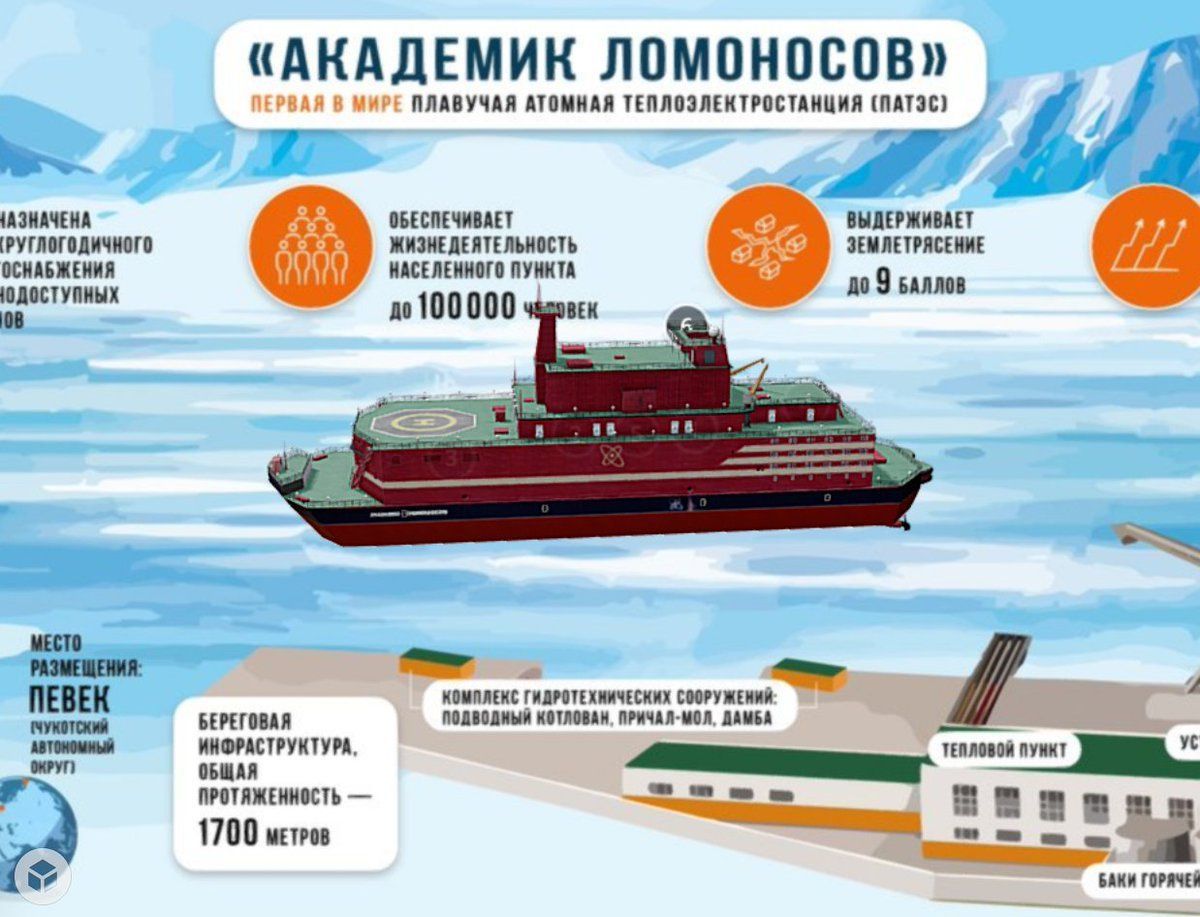
That was 13 years ago.
In May 2007, German Gref, then Minister of Economic Development, indignantly stated that the cost of one kilowatt of installed capacity of a floating nuclear power plant - $7200 - would never pay off.
"This is 7 times higher than in heat generation," Gref fumed.
But the developers kept talking about the fact that there was simply no other option to replace the Chaunskaya CHPP and Bilibinskaya NPP. And they called their numbers. At first, they estimated the cost of the Akademik Lomonosov floating nuclear power plant to be 3 billion rubles. Then the amount increased to 11.2 billion rubles. In 2016, Akademik... got heavier to 30 billion rubles at once. Then the price of the floating nuclear power plant increased several times.
As a result, Akademik Lomonosov cost 121 billion rubles for the country. But Sergey Kiriyenko, who was the "Godfather" of the nuclear pontoon, never honestly named the full cost of this nuclear toy.
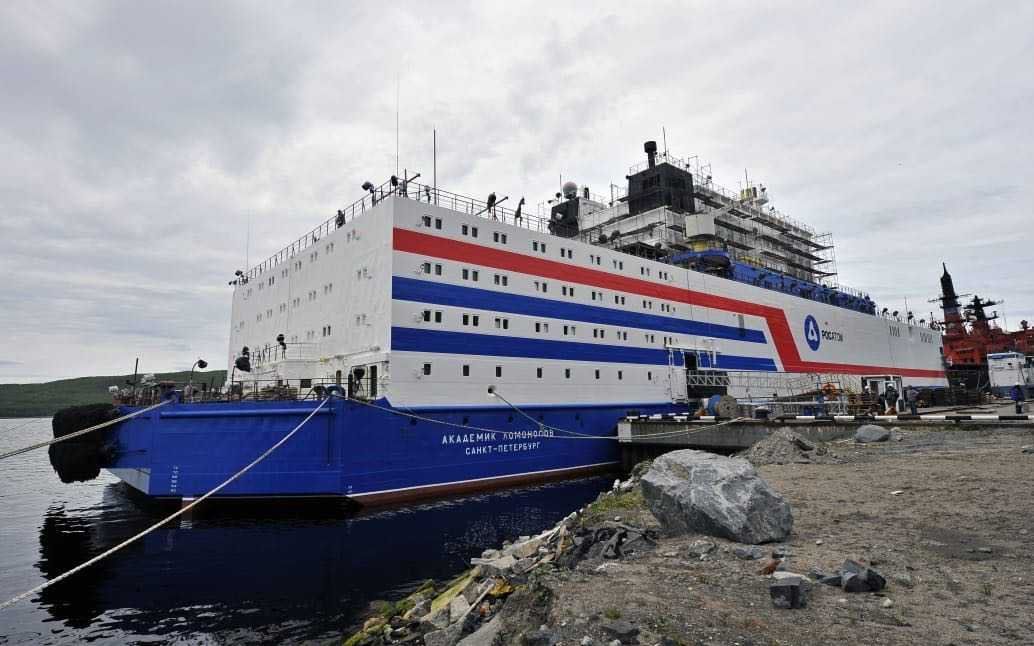
Akademik Lomonosov floating nuclear power plant was being built for Chukotka during 13 years
Mr. Kiriyenko also kept silent about how much the "improvement" of Akademik Lomonosov in Chukotka would cost. And the entire "wardrobe" of the nuclear barge tends to new billions!
After all, they say, in order to install this facility in the seaport, protect it from storms and ensure nuclear safety, it is necessary to build a dock of a complex configuration. To build some more buildings and structures of coastal infrastructure, on-site engineering networks and off-site heating and power supply networks.
The total length of the entire coastal infrastructure for Akademik Lomonosov should be 1700 m.
Note that almost all the materials - pipe sheet piles, anchor piles, rolled metal, sand, crushed stone, cement -were delivered by sea during navigation. And all this also cost a lot of money to the budget!
Further, it was necessary to allocate more than 18 billion rubles for the construction of power lines with a length of more than 490 km. Though these are not all the expenses that Rosatom was concentratedly silent about. The fact is that due to technological points, it is necessary to reload nuclear fuel on the Akademik Lomonosov floating nuclear power plant every 12 years. This procedure and repair work takes almost 360 days. But in order not to leave Chukotka without electricity and heat in these 360 days, the construction of a backup CHPP was planned in Pevek. How much? Another 18.9 billion rubles.

Sergey Kiriyenko, the "Godfather" of the floating nuclear power plant
But even then, according to the calculations of the atomic scientists, it was clear: because of the remoteness of Pevek from Bilibino, the floating nuclear power plant will not be able to fully replace the old Bilibino NPP.
But it became clear not even yesterday!
Such an absurd nuclear project was offered by Rosatom in the memorable 2006 year. So is this all useless? Should it be started again?
The promises were cool
However, Rosatom, already knowing that it had built something incomprehensible, continued to conduct an aggressive advertising campaign in the media about the world's first floating nuclear power plant Akademik Lomonosov. Solemnly joyful messages went on and on:
"More than half of the dock - about 320 metres - for the Akademik Lomonosov floating nuclear thermal power plant in Pevek is ready. 70 people are engaged in construction work."
"At the construction site, the stage of equipping the sheet pile foundation of the shore protection line and the approach dam has been completed. In addition to buildings and structures of coastal infrastructure, on-site engineering networks and off-site heating and power supply networks will be built."
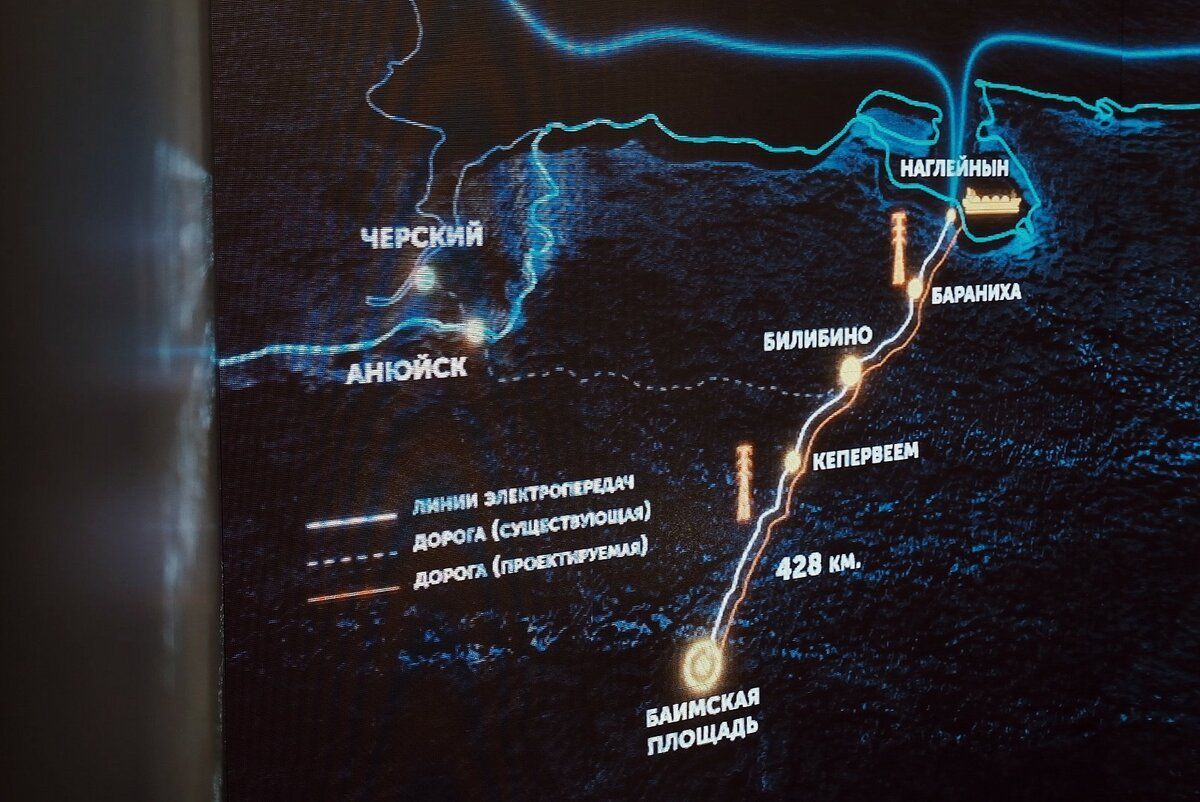
In its numerous advertising materials, Rosatom emphasized that the floating nuclear power plant is designed to replace the outgoing capacity of the Bilibino NPP. To do this, the nuclear barge should be included in the work of the Chaun-Bilibinsky power centre, which will provide electricity not only to Pevek and Bilibino, but also to the deposits of the Baimskaya Ore Zone.
"Today, a plan for the reconstruction of the isolated power system is being implemented, which includes not only the construction of new generating capacities - the floating nuclear power plant in Pevek and the power centre in Bilibino, but also several large network facilities: Pevek-Bilibino Power Lines and Bilibino-Kekura-Peschanka Power Lines".
But the launch date of the first stage of the 110 kV Pevek-Bilibino high-voltage lines in Chukotka, the construction of which was supposed to start by RusHydro, was postponed to 2023 in mid-2020.
And later, the following "announcement" was made: "the configuration of the Chaun-Bilibinsky junction project, which should include the Pevek - Bilibino line, may change due to the plans of a large investor."
The Chaun-Bilibinsky power plant — let us recall once again - includes both the Chaunskaya CHPP and the Bilibinsky NPP, as well as distribution networks.

Pevek port in Chukotka
RusHydro planned to build a new Pevek – Bilibino power transmission line in 2020. Again, it was promised that the project would provide power supply to consumers of the Chaun-Bilibinsky power centre and the Baimskaya mining zone.
490 km was planned for commissioning by the beginning of 2021.
Where are the promised 490 km?
Why did they end up building this miracle the size of a ten-storeyed house? And what kind of performance, but without the participation of the Akademik Lomonosov floating nuclear power plant, is being continued to be broadcast by Rosatom GC?
"The project is fatally unprofitable"
Nuclear professionals have repeatedly warned Sergey Kiriyenko that the project of a floating nuclear power plant is not only very expensive, but also very dangerous. This was written in detail by Argumenty Nedeli in the investigation Floating NPPs – "lame duck" of Rosatom.
Alexander Zhuravlev, an employee of the Directorate of Floating Nuclear Power Plants, a nuclear scientist with extensive experience, has been working with Akademik Lomonosov since 2006. Engineer Zhuravlev was dismissed from Rosatom twice for his independent position (in 2007 and in 2017), but journalists each time helped the nuclear engineer to return to his "native penates". This was written by Versia.
At meetings, engineer Zhuravlev repeatedly stressed that the project of the floating nuclear power plant is fatally unprofitable. The opinion of engineer Zhuravlev was also supported by the well-known Russian nuclear scientist, world-renowned scientist, Doctor of Technical Sciences, Professor Igor Ostretsov. According to him, the floating station can be profitable only if it serves a city with a population of 250 thousand people. However, as already mentioned above, about 50 thousand people live in Chukotka at the moment.
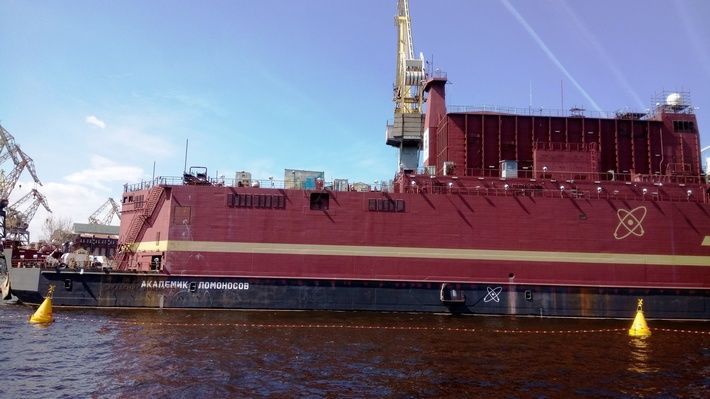
Akademik Lomonosov during construction
May the reason for the "oblivion" of the floating nuclear power plant be that there were and are huge problems with the construction of the dock and coastal hydraulic structures? And, of course, power lines.
In 2018, the Zapsibgidrostroy Trust worked on the construction of the facilities. And it worked scandalously: it did not pay contractors on bills.
Another curious detail: at the end of the year, the cost of work suddenly increased by 1.5 billion rubles, including a recalculation of the cost of work already performed. But the Trust received an order for the construction of the dock and hydraulic structures in the summer of 2016. September 2019 was announced as the completion date. But then "pauses" began to occur. And the contractors of the Trust were forced to file a bankruptcy claim against the Zapsibgidrostroy Trust. This was written by Versia.
The initiator of the court showdown was Sberbank. The debtor recognized its obligations. And promised to pay all the debts. Then Sberbank refused the claim about bankruptcy.
Another curious detail. An additional agreement to the contract was signed between the Zapsibgidrostroy Trust and Rosenergoatom. The cost of work on the creation of hydraulic structures for the Akademik Lomonosov floating nuclear power plant increased from 4.4 billion to 6 billion rubles.
Does it mean that there was a trivial "dividing" of budget billions? And can it really be continued to this day?
In the same way, year after year, since 2006, the cost of a nuclear barge has been also increasing in price: from 2.1 billion rubles. it soared to 121 billion rubles. Rosatom has stubbornly concealed the true price of the floating nuclear power plant, including from the country's leadership.
And even today, after the failure, our dashing Rosatom does not give up! Despite the obvious failures with the floating nuclear power plant project, Rosatom continues to conduct an aggressive advertising campaign and offer the project to foreign countries.
"We plan to produce such stations for the countries of Southeast Asia, Latin America and the Persian Gulf," said Alexey Likhachev, Head of Rosatom, in an interview. "In Latin America, cooperation with Argentine enterprises can be created."
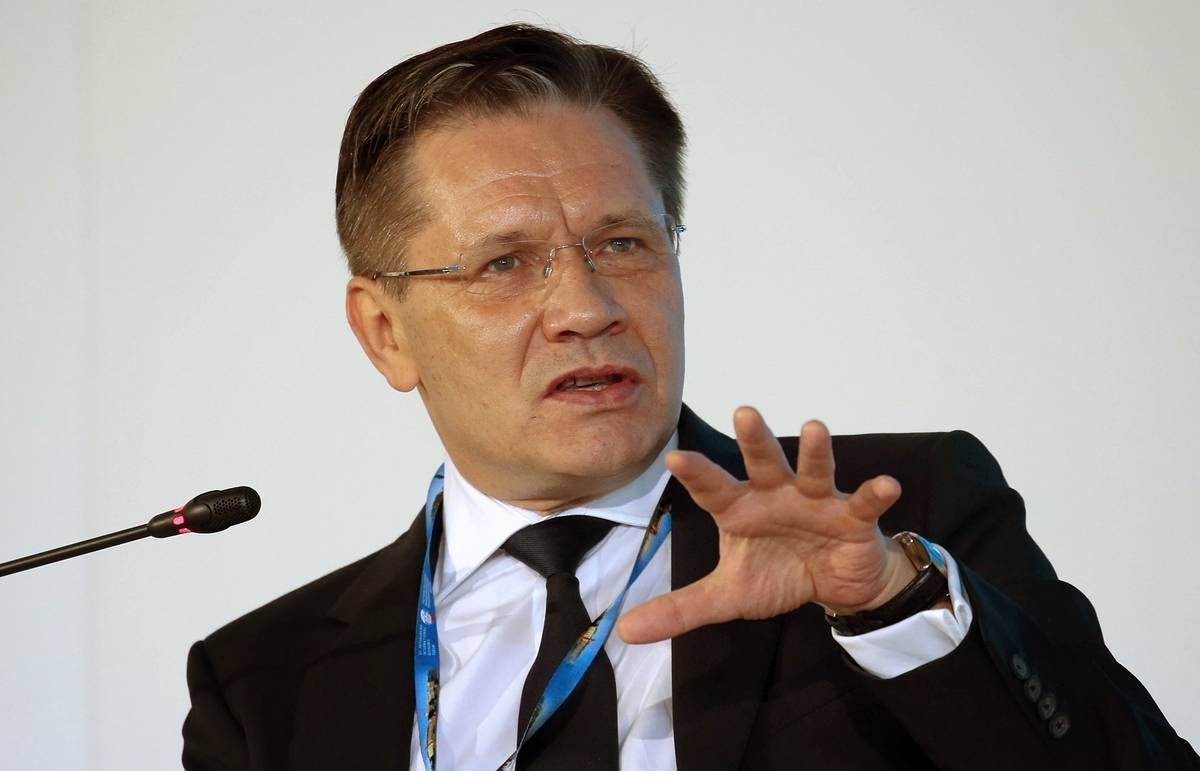
Alexey Likhachev "completed" the floating nuclear power plant after the departure of Sergey Kiriyenko
According to Mr. Likhachev, these countries show great interest in floating nuclear power plants, but it has not yet reached the conclusion of contracts…
Well, what will happen to the energy supply of Chukotka? When will the old Bilibino NPP, together with the decrepit Chaunskaya CHPP, be stopped? And according to what scheme, finally, will the energy supply of the Baimsky MPP go?
It seems that there are no answers to all these questions: today there is nuclear fortune-telling, which continues to draw from the budget no, not millions and not billions, but trillions.
And this happens as if with the connivance of the Deputy Prime Ministers of the Russian Federation, alas...




.jpg?v1609310590)
.jpg?v1609310590)
